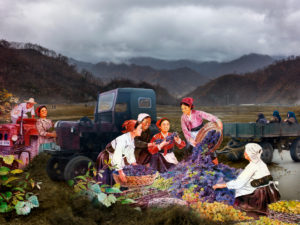
Alice Wielinga – North Korea: A Life Between Propaganda And Reality, 2013-2014
EIGHT 'RULES' OF PHOTOGRAPHY THAT ARE WORTH BREAKING A photographers work is often manipulated by a set of rules that have been drilled into the mind when learning how to use a camera. These rules are often followed through in photojournalism when it comes to documenting scenes, places and events. The rule forbids a photographer to manipulate an image digitally as it is often believed that a good photographer can take the perfect photo in the moment. However, manipulation can be looked at in different ways. When looking at a photograph which has been produced to record a series of events or a culture for example, it is a usual standard for the audience taking in the image to trust that the photographer has not staged or changed the scene in any way. However there is always an underlying pressure for a photographer to create an image that looks perfect or in a sense aesthetically pleasing for an audience to like and accept it. If the underlying statement for a set images has a political message, producing an image to have an impact and to be thought provoking towards an audience is almost impossible without having some control over the image you produce other than the chance of coming across a scene at the right place and time. Manipulating an image can be done during the process of taking the picture and editing or even by changing the caption. This can give the opposite connotations of what the original image had and can move the audiences viewpoint or focus on a photograph. For example, a news story will usually be accompanied by an image. If the editor was to change the headline of the image it can either change the image to be positive or negative; changing how someone can perceive a photograph. PAOLA PAREDES Paola Paredes created a body of work through redeveloping the visual representation of a set of images from Jean-Martin Charcot's 'evidence' of 'hysteric' women through digital technology, handmade collages and stitching, turning his imagery into animations. 'Transforming this once static archive into one now dynamic and contemporary'. 'These experimental pieces seek to increase awareness of a time when the field of medicine subjected women to abhorrent treatment'.
